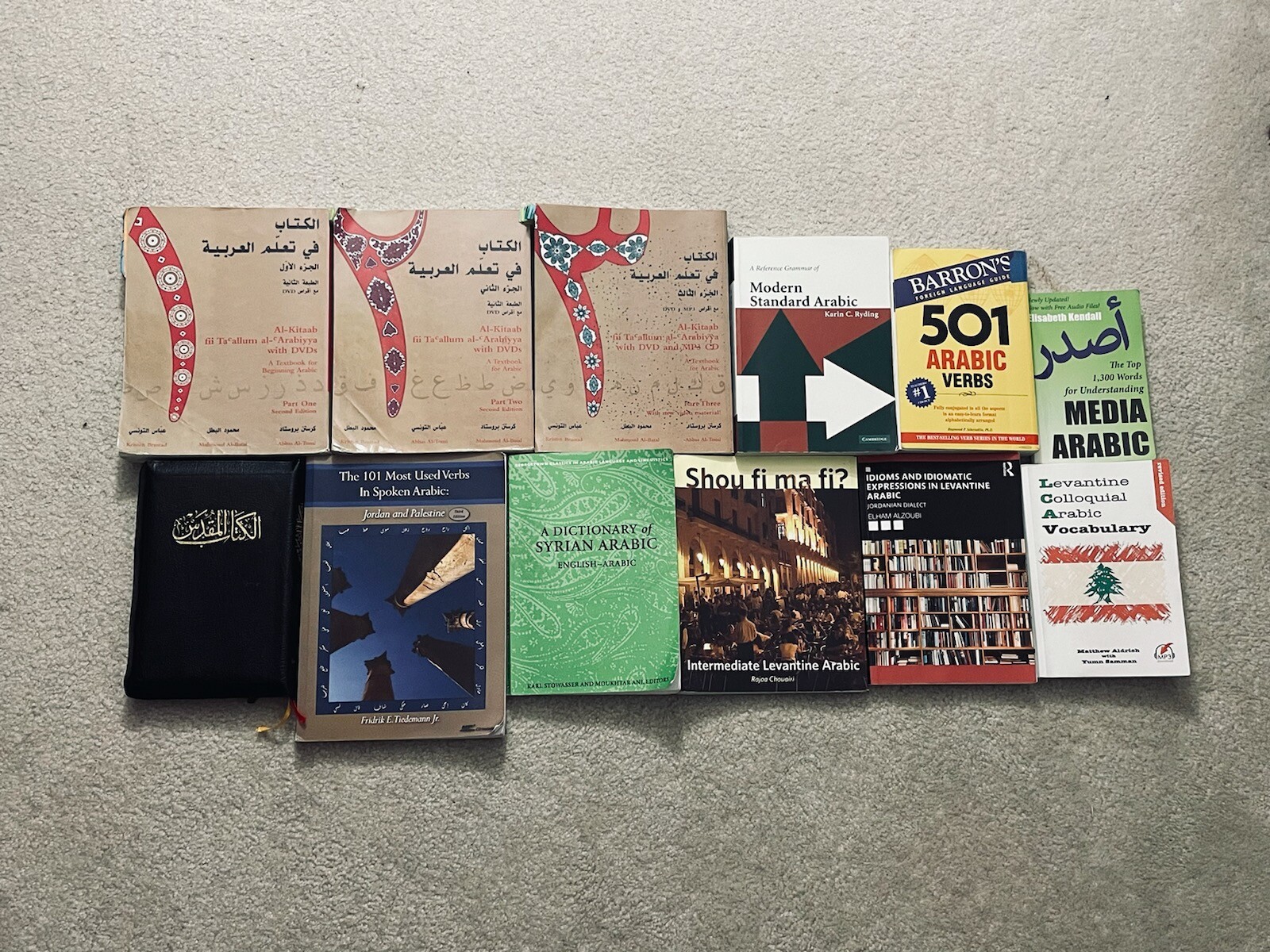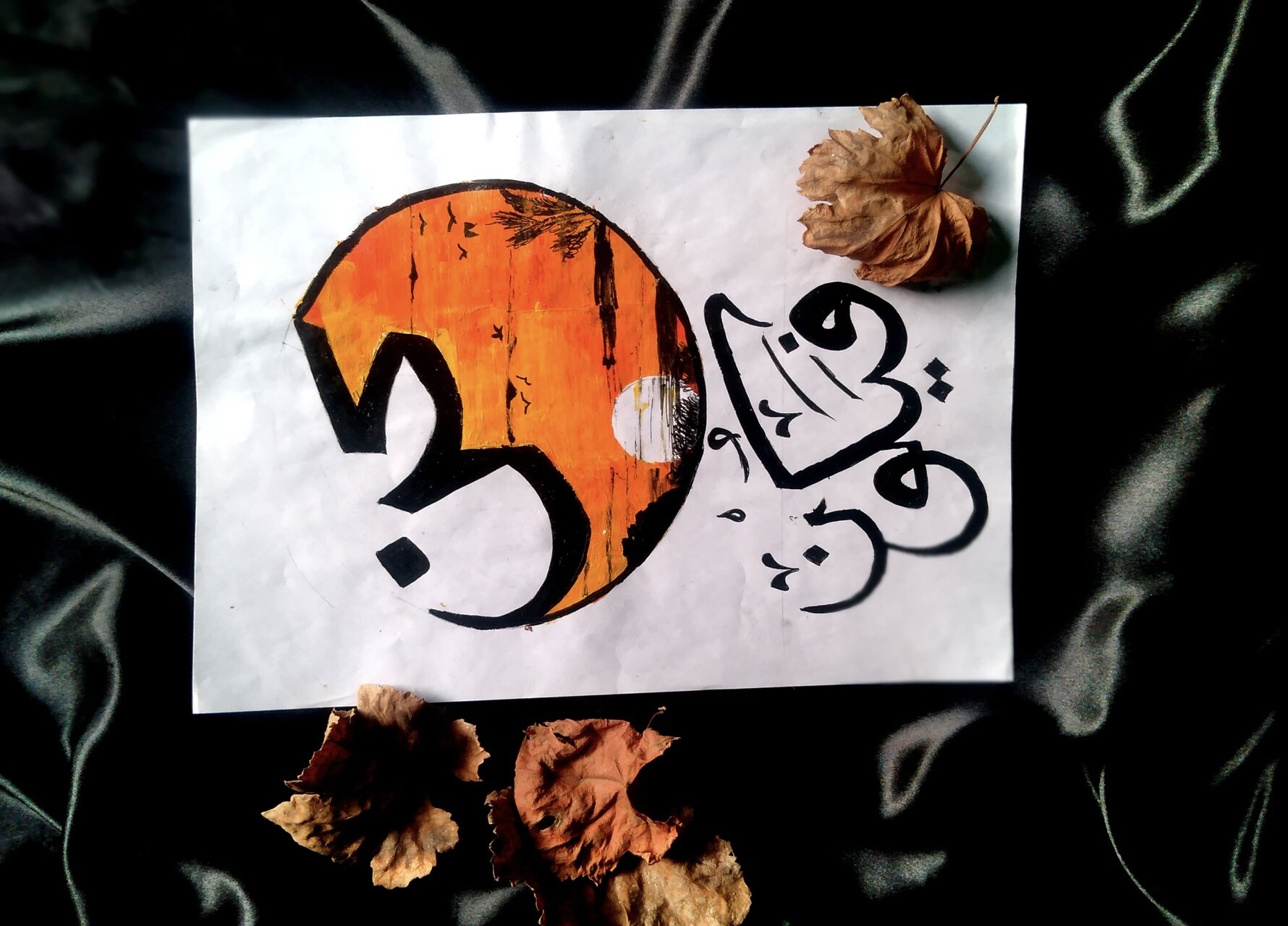
I know this post will concern a relatively small number of readers, but I want to get it out there because I think it may be a help to people who were once where I was.. Students of Arabic typically start with the classical for a few years and then progress to spoken dialects. This sequence makes a lot of sense for most people, because formal Arabic is universal throughout the Arab-speaking world, whereas dialects are a lot more local and diverse. In addition, many universities do not offer classes on dialects, due to a lack of interest, quality curriculum, and an overall emphasis on formal Arabic.
That said, anyone who wants to connect with ordinary Arabs will need to learn a dialect at some point. Arabs prefer speaking in dialect 99% of the time in non-formal settings. Arabic professors, journalists, clergymen, poets, and otherwise highly educated people, are good at accommodating people who only know classical Arabic, but you will have a hard time communicating with most people on the street. Even if they understand you, they will likely respond in the dialect, and communication typically breaks down soon after that.
It used to be that you had to live in the Middle East for many years, hire a private tutor, or have really patient Arabic-speaking friends to make serious progress in the dialects. Today, that is simply no longer the case. A number of quality resources have come out in recent years that have changed the game for students of Arabic dialects.
FYI, I included a list of some of my favorite colloquial YouTube channels/Podcasts in Levantine and Egyptian Arabic at the bottom of the article..
Without further ado. . .
The Best 5 Resources To Learn Spoken/Colloquial Arabic
1. Lughatuna (LivingArabic.com)
A crowd-sourced project by Hossam Abouzahr (which I myself supported), this electronic dictionary was a godsend when it came out a few years ago. The first of its kind, Lughatuna contains tens of thousands of colloquial definitions and sample sentences in Egyptian, Moroccan, and Levantine Arabic (Jordan, Palestine, Lebanon, Syria). You can search using both English and Arabic script. The app costed ~$2 last I checked, and you can use the dictionary for free online, at LivingArabic.com. The project has grown a lot since its inception; it now contains a substantial amount of entries and is my first recourse for looking up new words in dialect. See the pic below for a screengrab of the mobile app.

2. The 101 Most Used Verbs In Spoken Arabic: Jordan And Palestine (Fridrik E. Tiedemann Jr.)
This book was the first colloquial resource that really helped me advance in Levantine Arabic. The most recent Fourth Edition of the book, which you can find on Amazon, has dozens of sample verb conjugations in all of the ten verb forms for Jordanian/Palestinian Arabic. It also contains numerous definitions and sample sentences of more than a hundred commonly used verbs in Jordan/Palestine. In addition, there are thousands of additional colloquial vocabulary items, and a few grammar explanations as well. I can say that the 60+ hours I spent with this book over the years was time well spent. Note that Syrian/Lebanon verb conjugations are very similar to Jordanian/Palestinian.
As far as Egyptian, I never consulted a book, but there are similar resources available on Amazon. Search “Egyptian Verbs,” by Matthew Aldrich, for example. The dialects tend to be closer to each other than they are to classical Arabic, so you will find a lot of similarities between Egyptian and Levantine verb conjugations, as well.
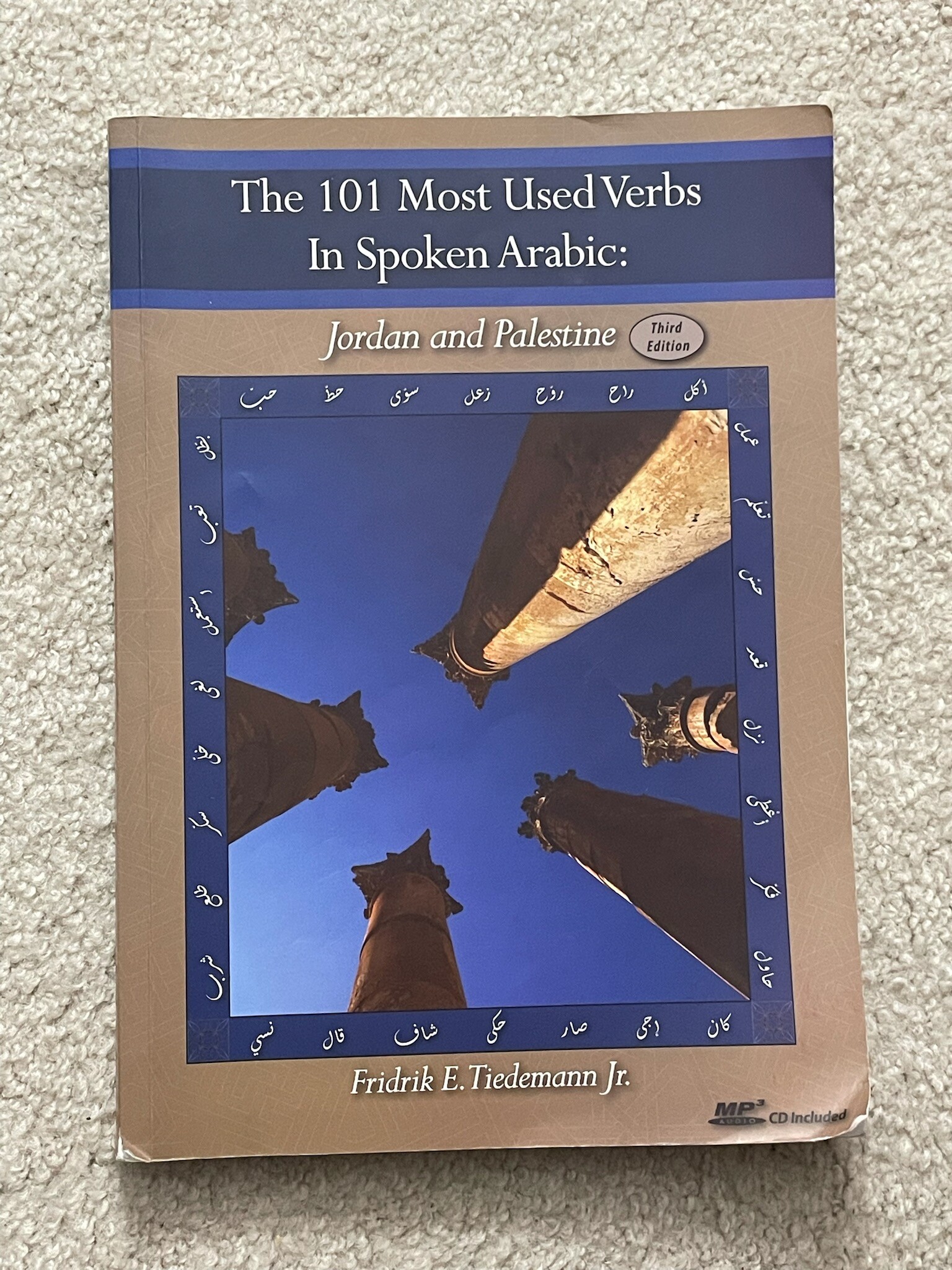

3. A Dictionary Of Syrian Arabic: English-Arabic (Karl Stowasser and Moukhtar Ani)
This 2004 publication (first published in 1964), is another game-changer. It contains approximately 15,000 entries (probably closer to 25,000 if you count synonyms?) in Syrian Arabic spoken in Damascus. The entries include the definition of the word and sample sentences, many of which are idiomatic in nature. Syrian is very similar to the other Levantine dialects, so you will improve at all of them using this book. Egyptian also shares many words and expressions with Levantine. Note that you need to have a solid background in Arabic for this book to be of help.
I will say that the font of this book is extremely small, almost to the point of being unreadable (see photos below). The text is also Romanized, instead of being in the Arabic script, which I don’t like. However, it’s not that hard to learn the Romanized system, and it is actually more precise with short vowel sounds than the native Arabic script. Due to the small font/Romanization, it took me a few weeks after buying the book to bring myself to start using it. However, I’m glad I did. I recently finished the entire book after spending 120+ hours over the course of several months.. My myopia may have gotten worse, but my spoken Arabic has gotten a lot better..
A good dictionary is the single most important thing to learn a language. Lughatuna and A Dictionary of Syrian Arabic largely solve that problem for spoken Arabic.
Note: Lughatuna added almost all the entries from A Dictionary of Syrian Arabic into its database (they’re labeled [S] for Syrian). The entries in Lughatuna also use the Arabic script, including the short vowels. However, since Lughatuna is an electronic resource, you cannot study it in the same general way to improve in the language. With Lughatuna, as with all electronic dictionaries, you need to know which word you want to look up in advance.
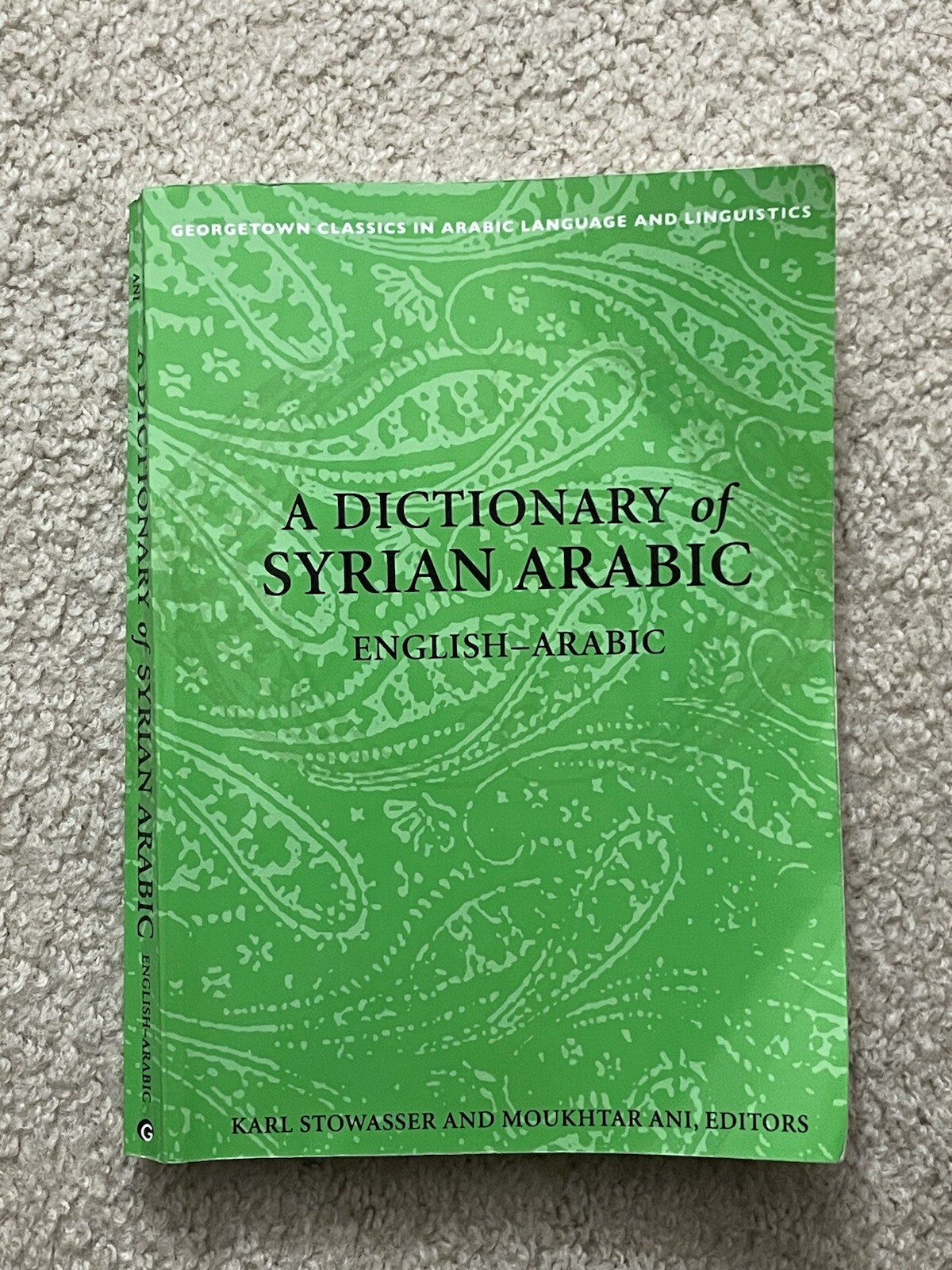
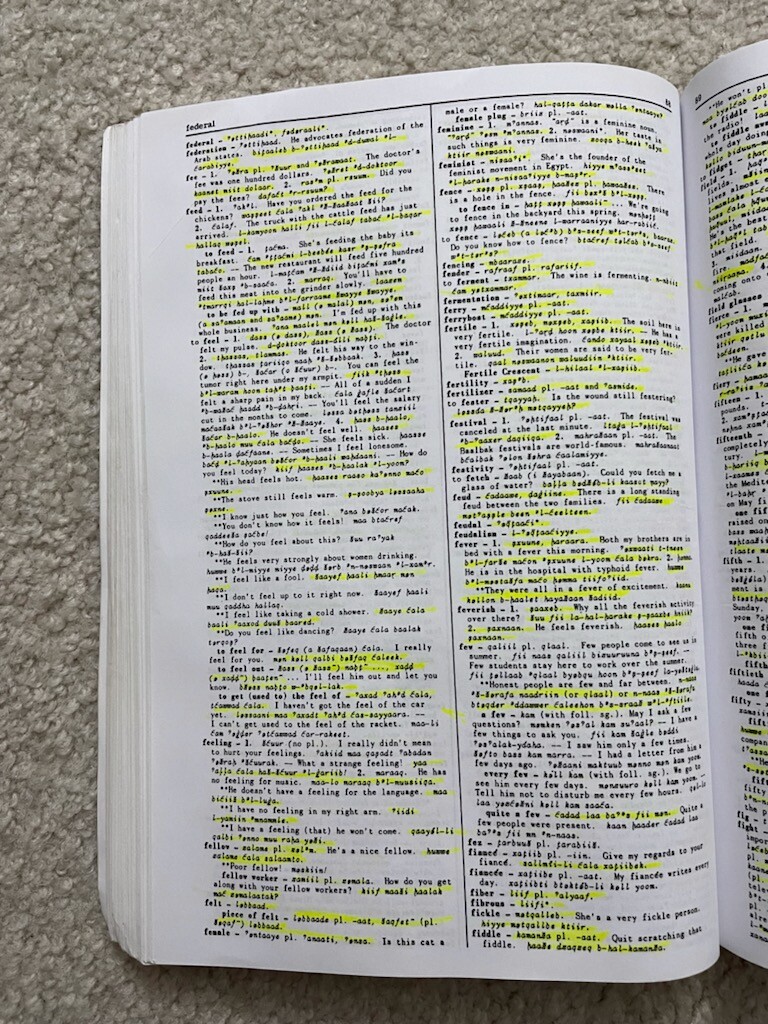
4. Idioms and Idiomatic Expressions In Levantine Arabic: Jordanian Dialect (Elham Alzoubi)
My family is from Jordan, so maybe I’m a little biased. However, this book, which was published in 2020, is undoubtedly the first of its kind for spoken Arabic. The book contains 2,000 of the most common idioms used in Jordanian/Palestinian Arabic. It is complete with not only sample sentences, but sample passages, for every single entry, written in the dialect for extra practice.. I ran many of the idioms by native speakers, and a lot of them are extremely common. I went through this entire book (~60 hours?), and I notice many of them being used all the time in the Levantine dialects.
Note that the book is not perfect. It does not contain the literal English translation of most expressions, which is important. The sample passages also do not contain short vowels (which is understandable, given how much work that would take to add.) The literal English translations, though, should be included in any future edition, in my opinion. The font is also kind of small, but nothing in comparison to #3 above..
If you know of a similar resource on Egyptian idioms, I’m all ears..
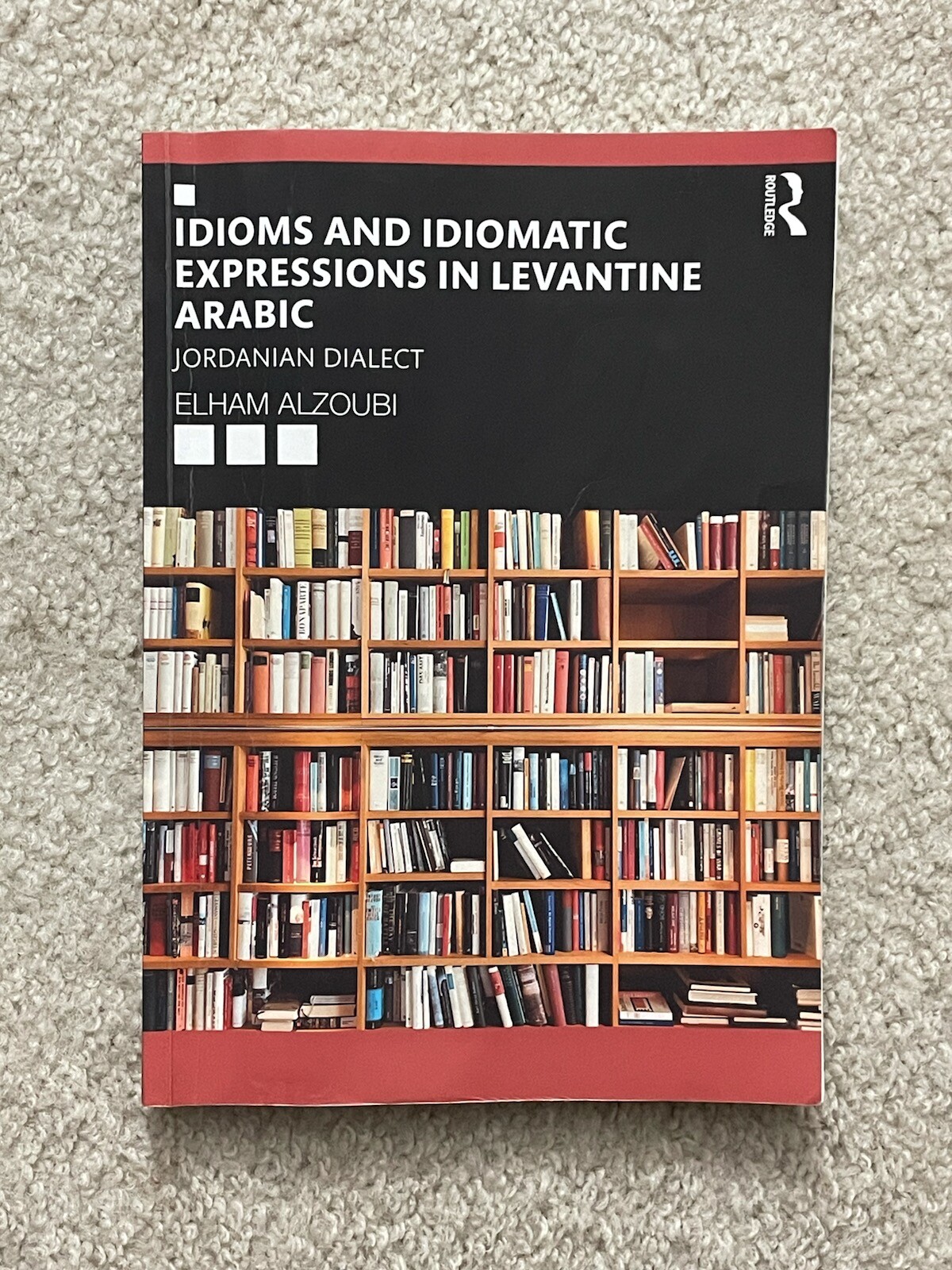
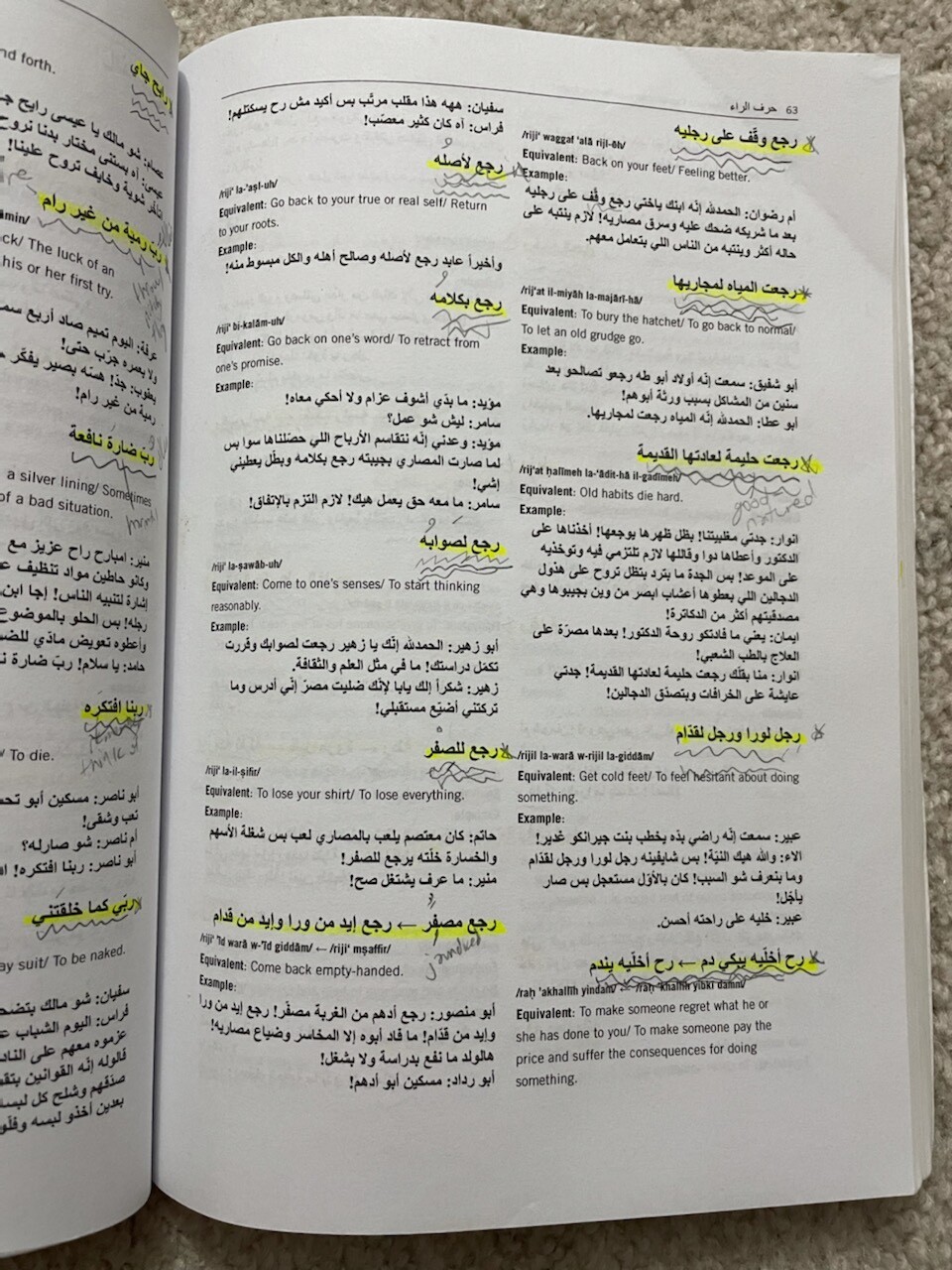
5. Shou fi ma fi? Intermediate Levantine Arabic (Rajaa Chouairi)
This one is my least favorite of the list, but it makes the cut because it includes a good amount of Levantine Arabic grammar. This was the curriculum for Levantine Arabic at The Ohio State University. Given how few good resources there are on Levantine grammar, I would check it out.
Colloquial grammar is nothing in comparison to classical in terms of complexity.. If you have a strong background in classical Arabic, you shouldn’t have too much trouble with it–you just need to learn a number of conventions. The biggest challenge for spoken Arabic is the vocabulary (including verbs and idioms). The challenge is also training your ear to understand what is being said because native speakers of dialect enunciate a lot less clearly than the classical Arabic you are probably used to hearing from your professors and Al Jazeera.
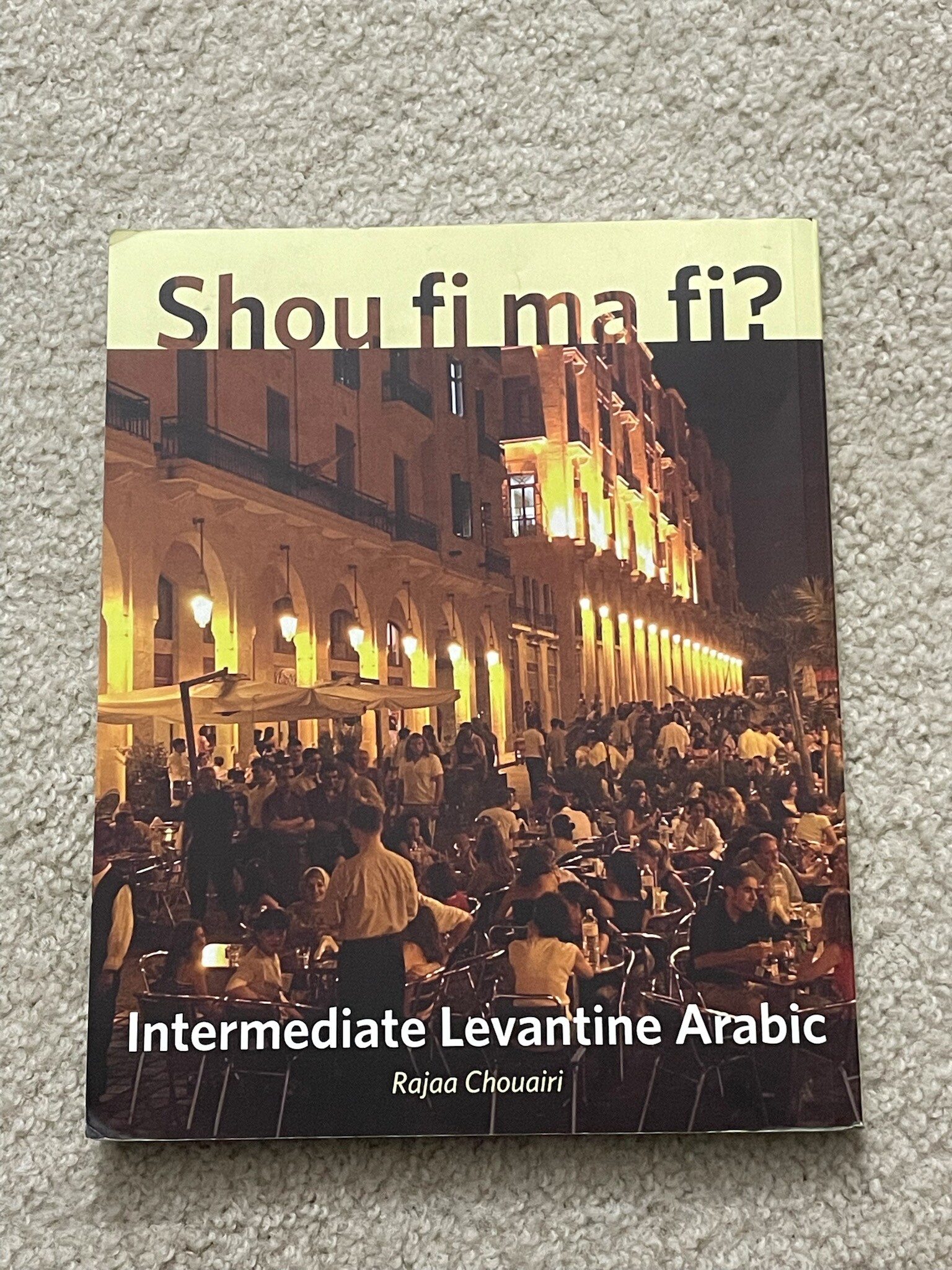
Honorable Mention: Levantine Colloquial Arabic Vocabulary (Matthew Aldrich and Yumn Samman)
This book contains “over 4,500 items (words, phrases, and example sentences)” in authentic Levantine Colloquial Arabic. The vast majority of entries are simple definitions. However, I found it helpful to have these items organized by topic. With a vocabulary like this, you get the most common/conventional way of saying something, which can help refine/sharpen language skills. They also include the transliteration for more accurate dialect pronunciation. The book is tailored toward Lebanese Arabic, but the vast majority of entries work throughout the Levant. Good for beginner and advanced-level students.
FYI, I also bought and read “Egyptian Colloquial Arabic Vocabulary†by the same author Aldrich. As I recall, 75% of the entries were pretty much the same, but can be helpful for people learning Egyptian.

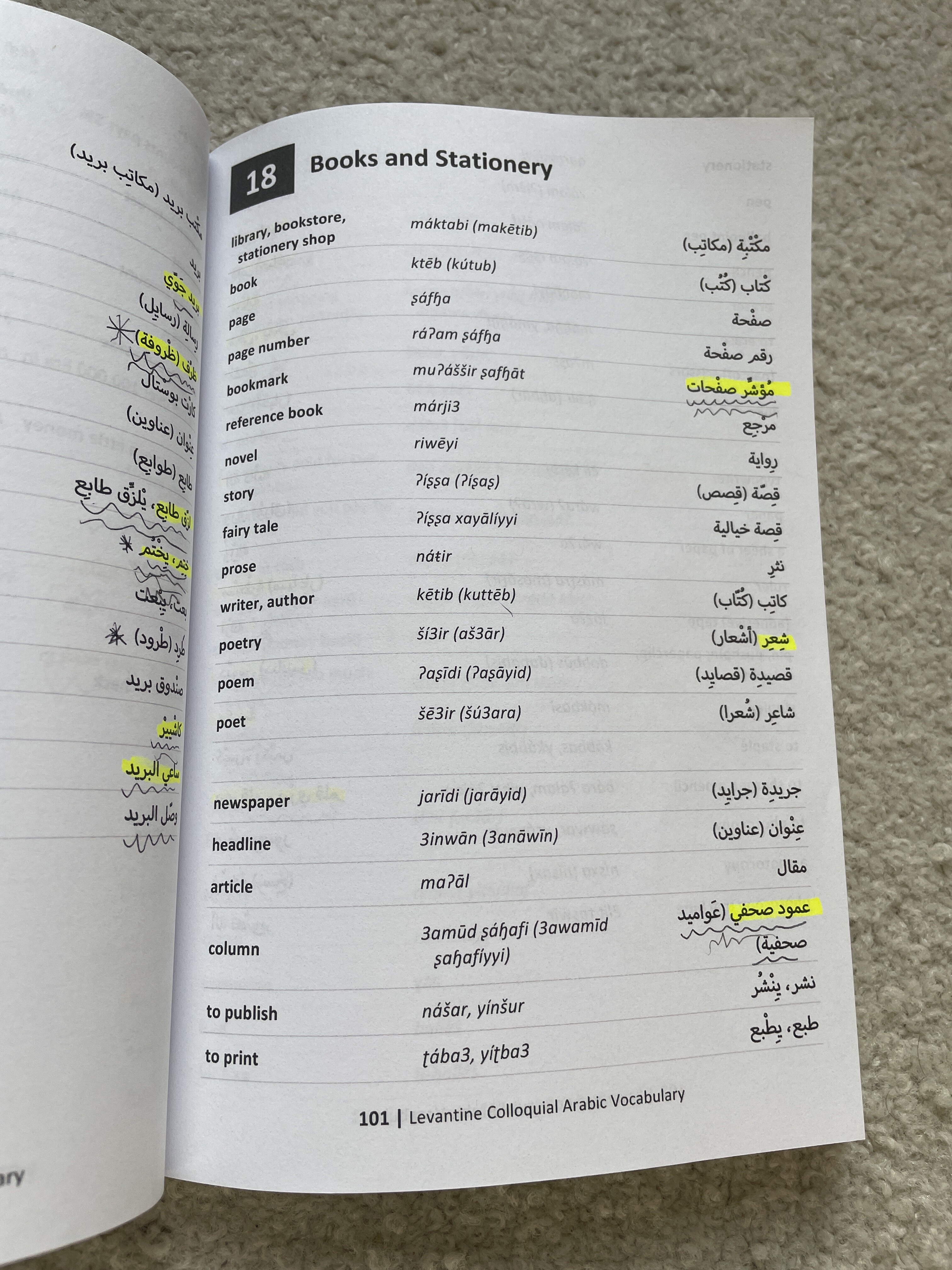
Bonus: Colloquial YouTube Channels And Podcasts
YouTube and Podcasts have been the biggest help to me with the dialects. It’s spoken Arabic, after all. While textbooks can be dry and boring, entertainment media tends to have the opposite effect. Once you get some exposure to the dialects with resources like #1-5 above, you can check out some content-based channels in the dialect. Here are some of my current favorites:
YouTube Channels:
Too many to list here, but my favorite Levantine right now are “Tashweesh Wadeh” (weekly Jordanian political satire show); “Salam Katani” (scientific content in Jordanian/Classical Arabic); “Ibn Hattuta Travels” (Jordanian traveler who visits interesting places; he speaks very clearly and simply); “Ahmad Massad” (high energy Jordanian comedian); “Ahmad Aburub” (another high energy Jordanian comedian, and super popular); “NourStars” (The most popular Arab YouTuber. Iraqi Arab living in the US. She grew up in Syria and speaks Syrian in her videos. I find some of her vlogs interesting because they cover topics relevant to life in the US).
As far as Egyptian, my faves right now are “Joe Show” (Egyptian Comedy show, similar to the Daily Show); “Sam Samouy” (Egyptian bodybuilder with educational and inspiring fitness content); Mamdouh NasrAllah (Egyptian commentator on international football; FYI, he speaks crazy fast); and my favorite Egyptian channel, “Dr. Mona Mashall,” who publishes self-help, life-advice, and inspirational content. Nothing but love.
Honorable Mention: Arabic rap battle has become a big thing in the Middle East, if you didn’t know.. “The Arena ME” features a bunch of Arab rap battles in some combination of Levantine/Egyptian/English. Very entertaining and good for the dialect (Some of the lines are quite difficult to understand).
Podcasts:
“Kefaya Ba2a” by Alaa El sheikh (One-man Egyptian comedy show)
“Awwal Shi Bonsoir” and “Taboo” (Lebanese talk shows on current events/pop culture)
“Wallah Miaow” (Jordanian interviews with beatboxers, musicians, creatives, hip hop artists, rap battlers, etc.)
“Eib” is also very popular out of Jordan. Like Taboo, it talks about issues of popular interest that are often considered taboo in the Middle East.
“Hay al Matar” (Syrian drama, sponsored by the EU, consisting of 150 15-minute episodes following the lives of various Syrian refugees. (The characters speak very clearly since it was a radio program where audio is the only input).
That’s all I got for this post. Good luck to you on your Arabic learning journey! I’d be interested to know what resources you have found most helpful with the dialects, as I am always trying to get better. If you liked this article, I invite you to check out other articles in the language section of this blog.
